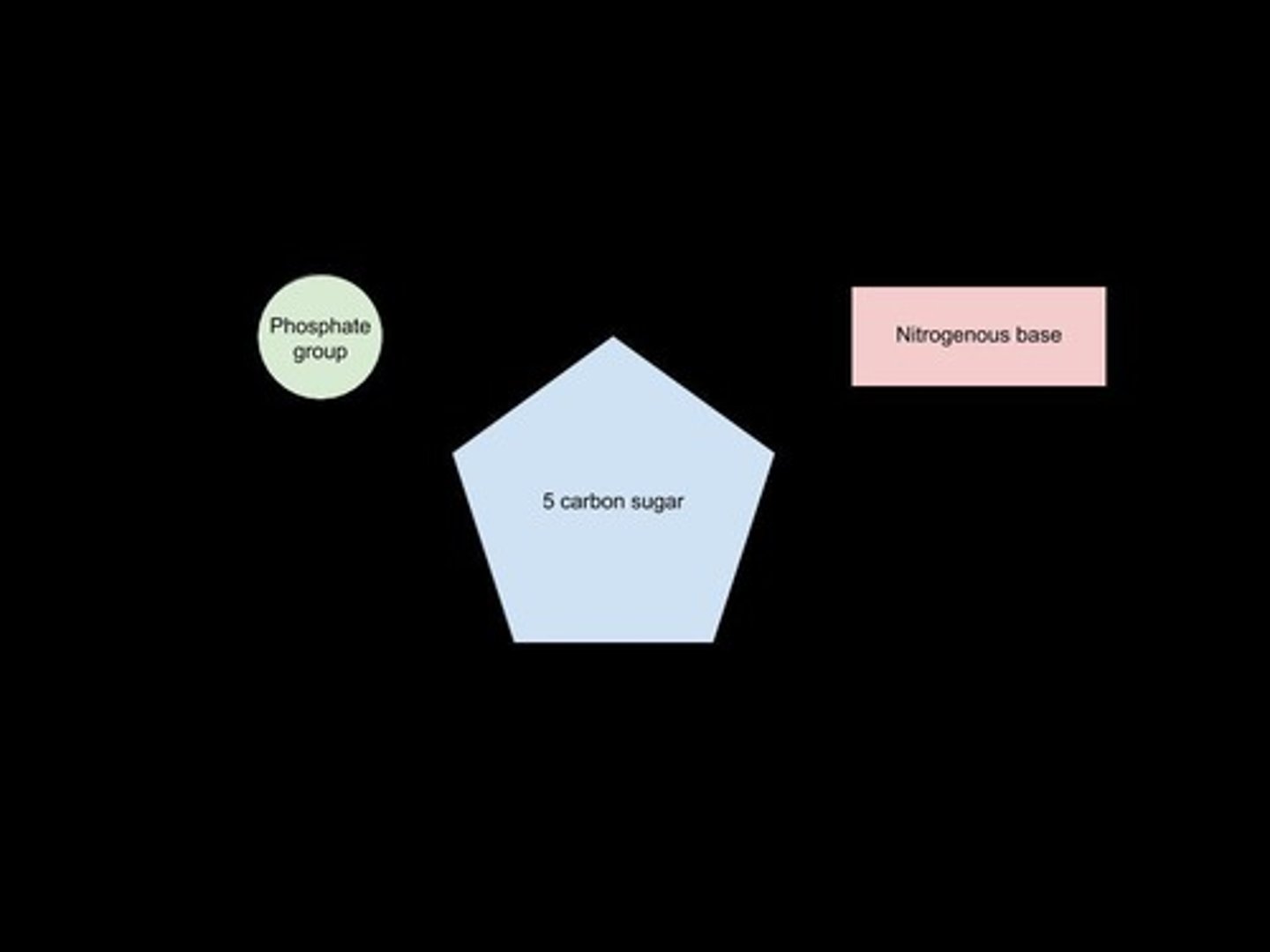2.3 Nucleotides and Nucleic Acids
1/33
There's no tags or description
Looks like no tags are added yet.
Name | Mastery | Learn | Test | Matching | Spaced |
|---|
No study sessions yet.
34 Terms
Nucleotide structure
The basic building block of nucleic acids.

Pentose sugars in DNA
Deoxyribose.
Pentose sugars in RNA
Ribose.
Formation of polynucleotide strands
Condensation reactions between nucleotides form strong phosphodiester bonds (sugar-phosphate backbone).
Breakdown of polynucleotide strands
Hydrolysis reactions use a molecule of water to break these bonds.
Enzymes in polynucleotide reactions
Enzymes catalyse condensation and hydrolysis reactions.
Structure of DNA
Molecule twists to form double helix of 2 deoxyribose polynucleotide strands with 2 sugar-phosphate backbones.
Base pairing in DNA
H-bonds form between complementary base pairs (A-T and G-C) on strands that run antiparallel.
Purine bases
Adenine (C5H5N5) and Guanine (C5H5N5O) are two-ring molecules.
Pyrimidine bases
Thymine (C5H6N2O2), Cytosine (C4H5N3O), and Uracil (C4H4N2O2) are one-ring molecules.
Complementary base pairs in DNA
2 H-bonds between adenine (A) and thymine (T).
Complementary base pairs in RNA
2 H-bonds between adenine (A) and uracil (U).
Common base pairing in DNA and RNA
3 H-bonds between guanine (G) and cytosine (C).
Semiconservative DNA replication
Strands from original DNA molecule act as templates, resulting in a new DNA molecule containing 1 old strand and 1 new strand.
Role of DNA helicase
Breaks H-bonds between base pairs to form 2 single strands, each of which can act as a template.
Formation of new strand during replication
1. Free nucleotides attach to exposed bases by complementary base pairing. 2. DNA polymerase joins adjacent nucleotides in a 5' → 3' direction via condensation reactions to form phosphodiester bonds. 3. H-bonds reform.
Features of the genetic code
Identify features of the genetic code.
Non-overlapping
Each triplet is only read once.
Degenerate
More than one triplet codes for the same amino acid (64 possible triplets for 20 amino acids).
Universal
Same bases and sequences used by all species.
Gene function
Consists of base triplets that code for specific amino acids.
DNA purification by precipitation
Add ethanol & a salt to aqueous solution. Nucleic acids precipitate out of solution.
Centrifuge process
Centrifuge to obtain pellet of nucleic acid. Wash pellet with ethanol & centrifuge again.
Transcription product
Produces mRNA.
Transcription location
Occurs in nucleus.
Transcription process
1. RNA polymerase binds to promoter region on a gene. 2. Section of DNA uncoils into 2 strands with exposed bases. Antisense strand acts as template. 3. Free nucleotides are attracted to their complementary bases. 4. RNA polymerase joins adjacent nucleotides to form phosphodiester bonds.
Post-transcription process
●RNA polymerase detaches at terminator region. ●H-bonds reform & DNA rewinds. ●Splicing removes introns from pre-mRNA in eukaryotic cells. ●mRNA moves out of nucleus via nuclear pore & attaches to ribosome.
Translation product
Produces proteins.
Translation location
Occurs in cytoplasm on ribosomes (which are made of protein + rRNA).
Translation process
1. Ribosome moves along mRNA until 'start' codon. 2. tRNA anticodon attaches to complementary bases on mRNA. 3. Condensation reactions between amino acids on tRNA form peptide bonds. Requires energy from ATP hydrolysis. 4. Process continues to form polypeptide chain until 'stop' codon is reached.
Structure of ATP
Nucleotide derivative of adenine with 3 inorganic phosphate groups.

Structure of ADP
Nucleotide derivative of adenine with 2 inorganic phosphate groups.
Mutation
An alteration to the DNA base sequence.
Mutation origin
Mutations often arise spontaneously during DNA replication.